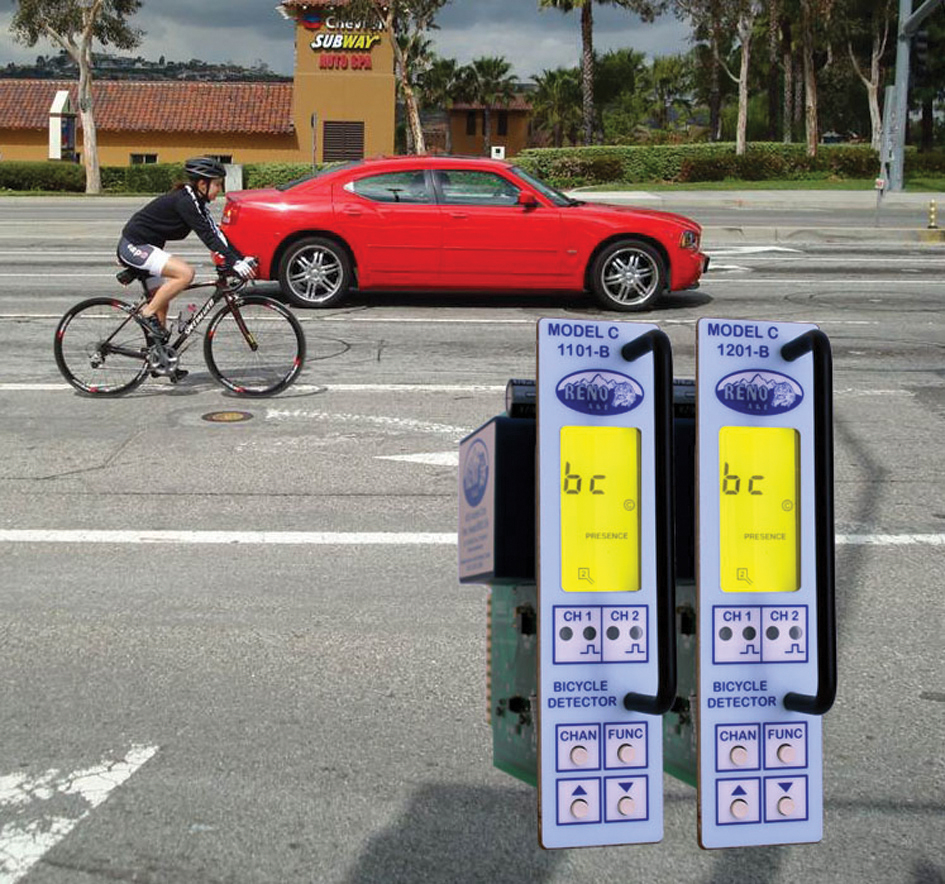
Two decades after the death of the inductive loops was predicted, Matt Zinn, technical services manager at Eberle Design says the technology still offers advantages.
More than 20 years ago the emergence of video detection systems led many to foretell the end of inductive loops. In the intervening years advocates of radar, infrared and wireless detection technologies have also claimed that loops were on their way out. But in fact, by all calculations, the use of loops has actually increased and although replacements accounts for some sales there is also new growth – some of which appear to be replacing those newer technologies.
Not only have loops been around longer than any other current form of detection, they also remain the ‘gold standard’ for accuracy. Over the years converts to these younger detection systems have stated that their technology was easier to install than loops and took less time in the roadway while still achieving the same accuracy and reliability.
However, many road authorities have experienced shortcomings with these new technologies which have prompted them to reconsider loops. Artefacts such as rain, snow, fog and electrical interference play a major role in reconsideration of the new technologies. Now, the loop detector has gone through multi-generational evolutions to keep pace with technology: analog ‘amplifiers’ transitioned to digital loop processing with the latest high processing speeds and memory capacity built into the detection systems.
This begs the question: What did they think was so bad about loops? Loops are easy to set up, work well and are reliable – indeed if installed correctly the loop itself should never fail. Many would contend this point but reality is that the loops don’t usually fail on their own – they are normally the victim of a backhoe bucket, a trencher tooth or movement of the road itself. This is no different to above-ground technologies falling victim to knockdowns or storm damage.
Unlike some other technologies, loops are not reliant on the weather, line of sight, temperature or any of the myriad of other influences; their capabilities have been (and are still being) enhanced with new materials and designs to meet new needs. Advances in the processing power have allowed increases in the loop’s functionality which now includes bicycle detection and automatic vehicle identification (AVI).
Bicycle detection
For many authorities bicycle detection is becoming increasingly important due to political initiatives to promote cycling and bike safety. New legislation in California requires all detection technologies at new and significantly upgraded intersections to be capable of detecting bicycles. This is driving all technologies to improve bicycle detection and loop manufacturers have risen to the challenge.
The US has two major loop detector manufacturers,
Reno A&E has two detector series which incorporate both hardware and software changes to provide for bicycle detection. Models 1100-B and 1101-B are built for the
When using existing loops the magnitude of inductance change is the determining factor for bikes while the other series, which uses the parallelogram loop, uses a signature recognition algorithm to detect bicycles. In combination with the parallelogram loop, the 1101-B and 1201-B can discriminate between a bike and a moped, scooter, motorcycle or any other vehicle that might cross the loop and approaches near-100% accuracy. While it still detects and outputs for all vehicles, it sends the controller a separate and distinct signal for a bicycle. This dedicated output can be timed to suit bicycles and provide extensions for controllers that do not have specific bicycle timing parameters.
Reno A&E’s AVI systems work by utilising a carrier frequency sent by the vehicle-mounted transponder to the loop which is tuned to receive the transponder code. In this way the loop detector system can identify an individual vehicle fitted with the transponder.
The system utilises standard loops with bespoke technology in the detector to recognise the frequency changes induced by the hockey-puck sized transponder on the vehicle. The frequency is based on any one of 19,683 codes the transponder can generate.
Gated communities around Las Vegas use these detectors to allow hundreds of vehicles in Clark County to gain access without having to use keys or access key pads. In Los Angeles this technology provides priority for buses at intersections without additional roadside infrastructure. However, on a wider scale, the potential for this technology has often been overlooked by road and transit authorities.
Prefabricated loops
Some of the most important advances in loop detection are in the loop itself so it has become even more important to get the correct specification for the particular installation.
For instance the prefabricated PLB loop provided by both Reno A&E and EDI is an integral part in its bike detector system. Because the bike detector system uses signature recognition and is looking for a very small signature, the loop itself has to be a very specific design and manufactured to tight tolerances. This is why Reno A&E’s signature recognition bike detection system requires the use of this loop design.
In addition to the physical size of the loop the correct number of turns must be calculated to provide the inductance required and while this is well understood, the equally critical ‘loop efficiency’ parameter is often misunderstood or ignored. Loop efficiency is the ratio between the inductance of the loop and the combined inductance of the loop and home run cable.
Oversights in this area can cause intermittent problems.
To help ensure the size and shape of loop, the number of turns and the loop efficiency is correctly specified for the required detection, the manufacturers have created special calculators - EDI’s can be found at: http://www.editraffic.com/wp-content/themes/eberle/flash/loopCalculator.swf.
Both Reno A&E and EDI produce a new generation of prefabricated loops which exceed most current standards and requirements. Unlike the older preformed generation which were rigid and pre-shaped in conduit or rigid PVC piping, these latest loops are flexible and can be manufactured to any specification of size and home run and are now called prefabricated or premanufactured. They also are manufactured using the latest abrasion and chemical resistant materials and sealants. As the latest loops are very flexible they can better withstand slight ground movements. Sealing has been improved with the use of a water block material that makes them impermeable to moisture even when immersed in a salt bath for three days and then tested to 999 Megaohms with a 500V meter.
Installation is another big variable and standards exist to make sure that the loop will last as long as possible. Reno’s PLB loops are installed in saw cuts and the PLH variant is used for milled and overlay applications. While both are similar, the PLH loops have a double outer jacket for added protection against direct contact with paving machinery and hot asphalt. The PLH-R loop is designed for direct burial in locations such as gravel roads and under railroads. Properly installed, the prefabricated loops are expected to last the lifetime of the road, save for extreme movement of the roadbed.
Commissioning the loops has also become easier and with most only requiring few, if any, adjustments. The adjustment process has been simplified with the introduction of LCD and LED front panels to provide visual feedback of the loop’s functionality and set-up. In some cases these displays also take the place of dip switches. In the future it will be possible for loop detectors to be self-adjusting and need no human assistance for set-up.
For instance EDI’s Deflectometer in the LMD series has a seven-segment LED to provide technician feedback during commissioning to indicate that the sensitivity of the loop is correct for all vehicles. EDI’s Oracle processor, which also has Deflectometer technology, comes in several configurations and has a backlit LCD control panel with automatic tuning, eight loop frequencies, four modes of operation and timed multiplexed scanning.
Other technical advances worth mentioning are accurate counting on loops up to 6x40, anti-tailgating technologies for use with gates, tolling and ‘wrong-way’ detection.
The conclusion is that if the reality and functionality of loops was as poor as some of its detractor’s would have us believe, there wouldn’t be any left in the ground. In fact there are an estimated four million loops in North America alone and that number is still growing which is testament to their reliability and durability. Correctly specified, located and installed loops still represent the best value for reliable detection of any technology available today. And with their increased functionality and easier installation, loop detectors still have a place in modern ITS systems.










